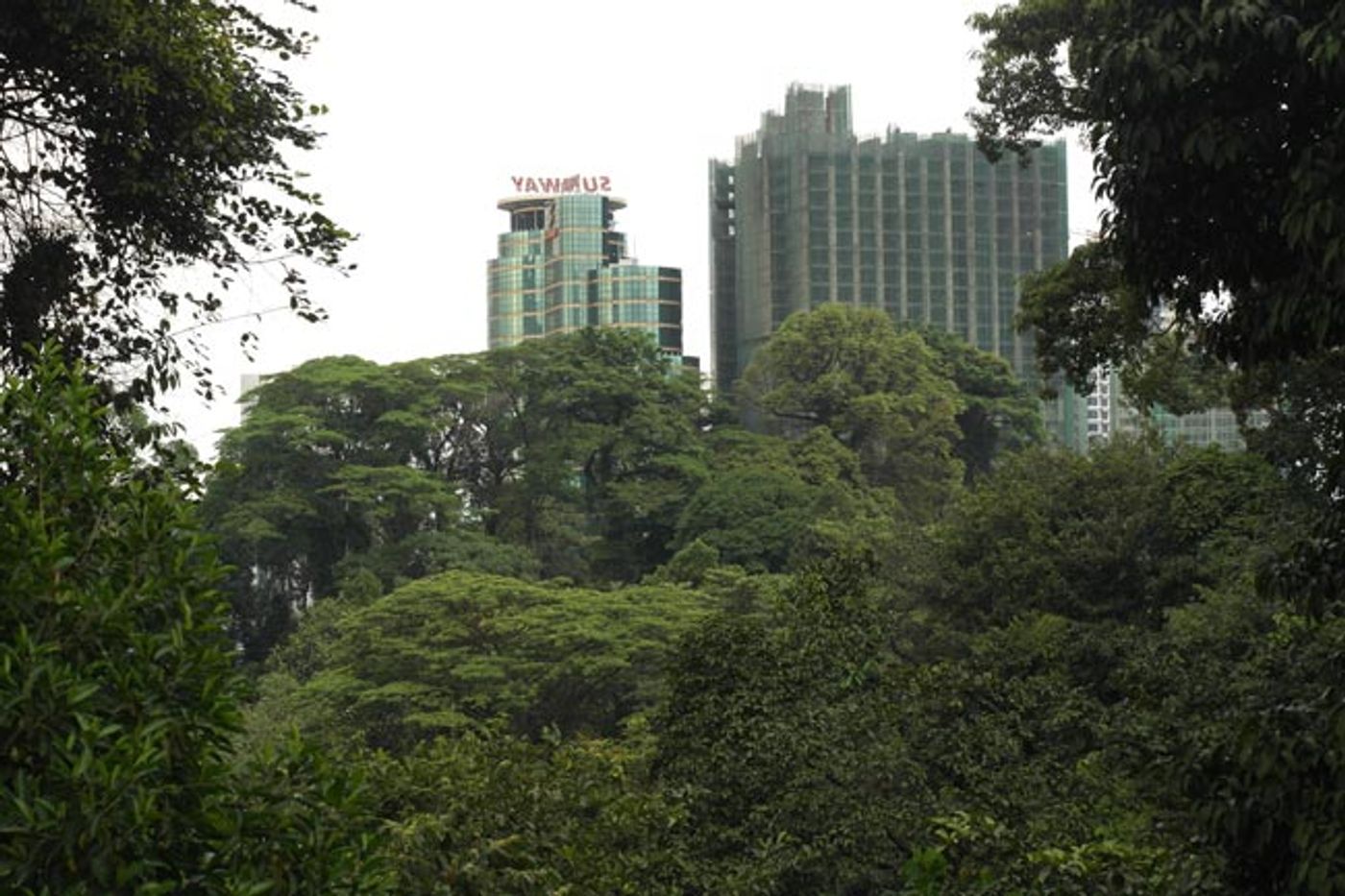Kuala Lumpur boasts a biodiversity Eden
A forest reserve in Malaysia offers the perfect example of how biodiversity can thrive even in the smallest of territories if left to its own devices. The Bukit Nanas Forest Reserve (BNFR) is the oldest urban patch of forest in the country, established around 1900. Also called KL Forest Eco Park, it sits in the middle of the capital city Kuala Lumpur, surrounded by skyscrapers. But look closer, and you will find 425 plant species growing in this jungle of Eden, despite its reduced territory of only 17.5 ha to a mere 9.37 ha. Such diversity has captured the eye of a team of scientists interested in documenting the ecological history of the reserve. Check out what it looks like in the video below.
The team of scientists hailing from Forest Research Institute Malaysia (FRIM) used a template called the “Ecosystem Inventory” (about which an article was published in the journal One Ecosystem) to analyze the eco-park. Conducting surveys from April of 2015 through May 2016, the authors discovered the touted 425 diverse plant species. Of those species documented, 159 were new the records. In past ecological inventories of the reserve, the total of species from all previous surveys accounted to 499 species. Taking into consideration the cumulative versus non-cumulative counts, as well as the fact that the area of the territory was essentially halved, scientists were thrilled to discover such unexpected biodiversity.
Because the territory has never been logged, some of the most impressive species are giant trees that are thought to be several hundred years old. One of these trees, a Ficus vasculosa called “Ara boasts a diameter at breast height (dbh) of 124 cm. Others reach up to 35 meters tall. Another noteworthy find was Tarrena rudis, an endemic species found only in Selangor.
However, the scientists were unable to locate 12 species that were in previous surveys, and fear that that could signify some endemic loss. "Bukit Nanas Forest Reserve can be still categorized as a forest with a good structure and diversity still holding a great variety of species,” explain the authors. "The large loss of previously recorded endemics, however, raises concerns about the future of this reserve and calls for the reconsideration of conservation measures."
Many Forest Department officers use the reserve as a place to study plants while city residents enjoy it as for recreation. "This [acts] as a green lung in the bustling city, enriching its biodiversity, history, public recreation qualities and offering possibilities for scientific study and education…" the authors stated. “Baseline data, such as this survey, enables scientific management that will maintain the forest structure and biodiversity.”
Sources: Science Daily, One Ecosystem









